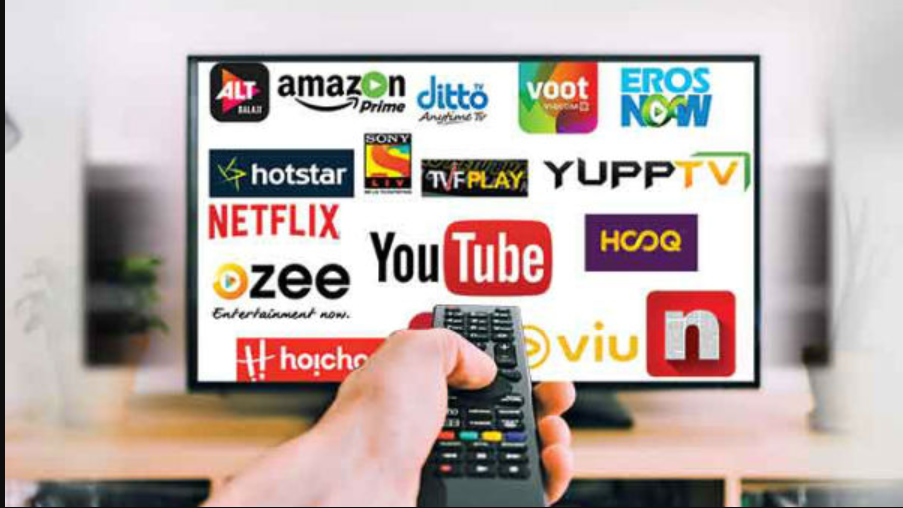
by Dr. Ashwini Ramesh 19, 2021
The year 2020 revolutionized digital media consumption in India. Covid-19 pandemic and national lockdown gave an exceptional growth for over-the-top (OTT) platforms. The media shift from television to a digital domain that was expected to take place in 4-5 years transcended within six months. Thanks to the prolonged stay-at-home orders.
Presently, the Indian OTT space has around 40 active channels streaming an array of content. Netflix, Disney Hotstar, and Amazon Prime have dominated the industry. Local production houses like ALTBalaji, Zee 5, SonyLiv, Voot are competing successfully. Extra care is taken to provide engaging content in every genre – family drama, romance, thriller, kids, and adult content. Localization has been the topmost priority for all OTT channels. With more focus on the Hindi language, regional language is accounted for more than 50% of OTT streaming. Movies, soaps, and reality shows are the most consumed media.
Growth of OTT in India
As per the Media and Entertainment 2020 report by PricewaterhouseCoopers (PwC), India is the world’s fastest-growing OTT market. It is set to be the world’s largest OTT consumer by 2024 and is expected to grow with 28.6% CAGR in four years. This highly competitive and consumer-driven market is segmented among advertisements, subscriptions, freemium and transactional video on demand.
According to RedSeer analysis, presently, Disney Hotstar is the most subscribed OTT channel in India. Its lower subscription rate has seen 300 million active users and 350 million downloads. It is believed that increasing affluence, low-cost internet, inexpensive smartphones, viable regional and niche content have opened up OTT market across tier 2 and tier 3 cities. Adopting this new entertainment technology among kids, women, and older generations as per their preference within the comfort of home has added to OTT expansion.
Regulation of OTTs in India
Every form of Indian media has a regulatory mechanism. The print has the Press Council of India (PCI), television has News Broadcasters Association (NBA), and advertisements have the Advertising Standards Council of India (ASCI). Quoting this, the Government of India is attempting to regulate OTT platforms. The first step was taken in 2015 by the Telecom Regulatory Authority of India (TRAI) that announced a Regulatory Framework for OTT services through Internet Licensing. However, the idea was dropped to promote Digital India.
In the past two years, the Indian government is intensifying the talks to regulate the OTT platform stating that the content showcased by them features large amounts of violence, nudity, and filthy language. In 2019, the Internet and Mobile Association of India (IAMAI) drafted self-regulation codes for OTT players. Also, Digital Content Complaint Council (DCCC) was formed as a complaints redressal group. Information and Broadcasting (I&B) ministry aims to regulate digital audio-visual programmes, films, news, and current affairs channels.
Some of the top OTT Hindi web series in 2020 were Aarya, Paatal Lok, Bandish Bandits, Special Ops, Panchayat, Pushpavalli, Undekhi, etc. While these web series enjoyed popularity, a few others faced criticism. Amazon Prime’s political drama Tandav had to perform ‘voluntary cuts’ of a few scenes. Makers of Tandav were accused of promoting enmity between different religious groups and defaming places of worship. Also, the film AK vs. AK on Netflix was criticized for hurting the sentiments of the Indian Armed Forces (IAF). This was followed by an apology by its lead actor Anil Kapoor. A few more web series, namely Wild Wild Country, Hansmukh, Leila, Queen, Sacred Games, etc., were surrounded by controversies and public wrath.
At this juncture, the question arises that if the government regulates every form of media, where can the freedom of free expression arise? How can the proposed OTT monitoring body decide which content is good or bad for viewers? Every spectator will have a different perspective for the same content. At every stage of monitoring, it has to be noted that OTT is not majorly for the family watch but a private and an individual mode of entertainment. OTTs are curated for a niche audience who decide to view the content out of their own choice. Thus, any rules public viewing cannot be imposed on them.
By regulating this creative platform, it has to be seen if the government is also aiming at stringent censorship of OTTs. If the content is subjected to the scrutiny of the censor board before broadcasting online, it is bound to lose its innovation and originality. If the freedom of realistic storytelling and free flow of scriptwriting are controlled, the effect will be on audience engagement. The digital streaming space gave path-breaking opportunities for new actors and creative talent, unlike the traditional entertainment industry known for nepotism. OTTs have nurtured high-quality audio-visual productions and immersive storytelling. Its regulation will have repercussions in unimaginable ways, including business losses.
